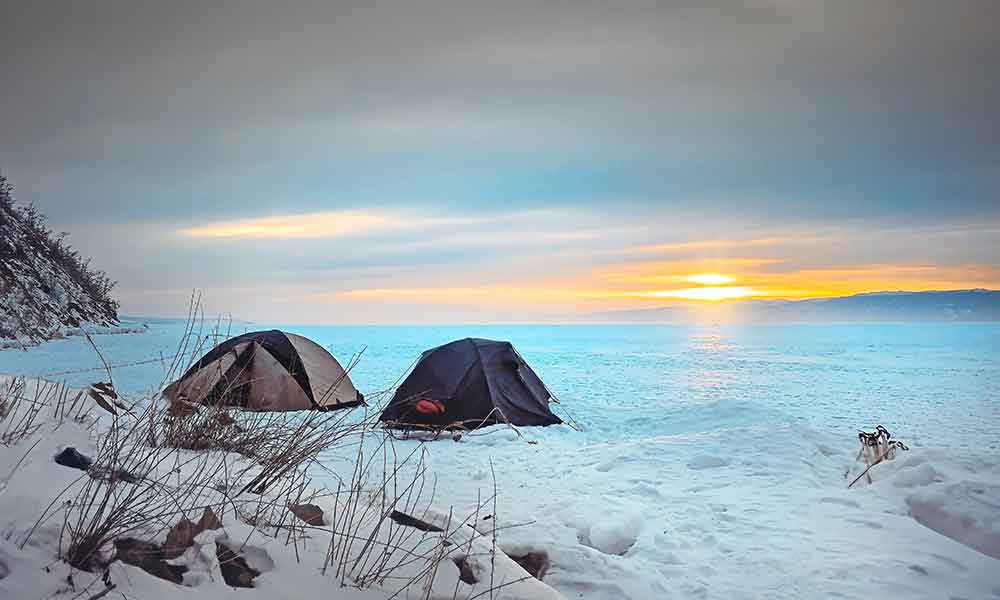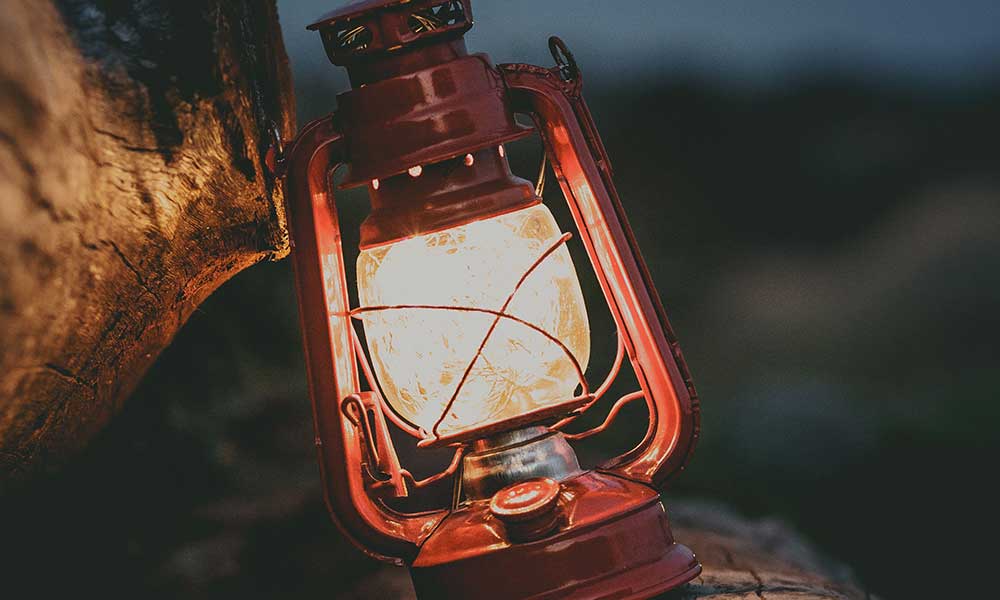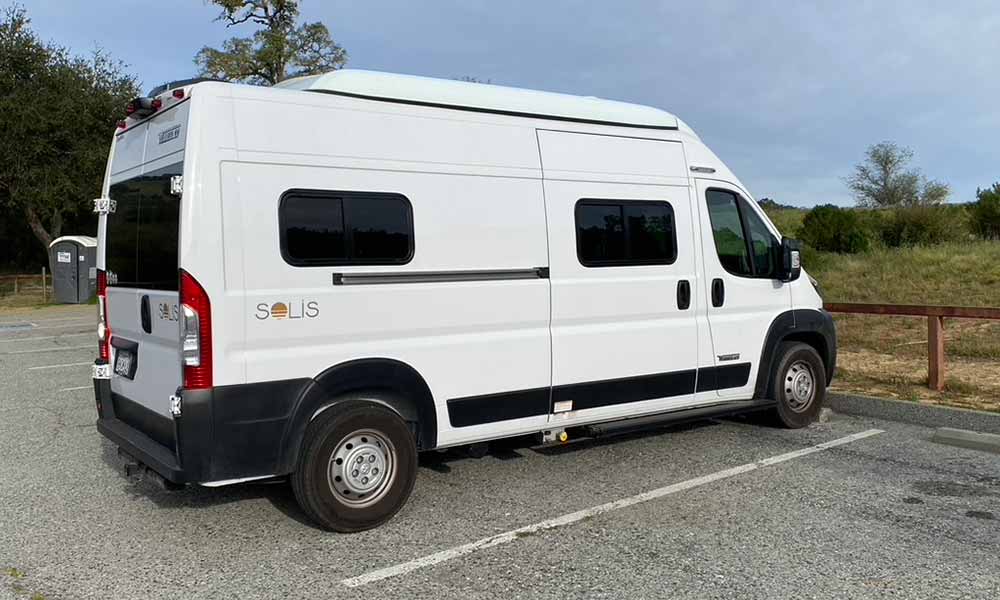Camping is a great summer activity. You can go swimming, fishing, and enjoy the starry nights when camping. However, winter camping, while not as popular, has many fans. Experiencing nature when covered with snow is a whole other experience and can be worth it if you pack accordingly. So how does one go about camping in the winter?
Camping in the winter requires additional gear and precautions. You must take extra sleeping pads, warm clothes, and a weather-appropriate sleeping bag. Setting up a winter campsite also has some other steps, and you must stay clear of potential avalanche sites.
We will discuss what to pack when camping in the winter, setting up a campsite in the winter, and other tips to make winter camping safe and enjoyable. The most important thing when camping in winter is to stay warm and dry. Hypothermia and frostbite are severe concerns during winter and can be life-threatening. Here is how to camp in winter:
1: Packing The Right Gear For Winter Camping
Before considering camping in winter, you must first ensure that you have the right gear to survive a winter camping trip. Of course, you must bring all the camping basics. However, you must also have other things to camp in winter. Here is what you must pack for winter camping:
- A four-season tent. If you are camping in an area prone to snow, investing in a four-season tent is worth the expense. A four-season tent has thicker poles and is made from thicker materials, making it less likely to get damaged in a snowstorm.
- A good sleeping bag. Purchase a sleeping bag rated for temperatures at least five to ten degrees less than you expect to have. Winter sleeping bags have hoods and are usually made of down which helps to insulate you. If you don’t have a sleeping bag sufficient for the cold, you can also use a sleeping bag liner.
- Two sleeping pads. Although an additional sleeping pad will take up extra space, it is essential for keeping you warm. Have a close-sell foam pad for the first layer, followed by a self-inflating sleeping pad to sleep on. The extra pad will ensure you are isolated from the cold ground.
- Winter gloves and a hat. Frostbite is more likely to occur in exposed areas. Therefore, having proper winter gloves and a winter hat made from wool or synthetics will help protect you from the cold.
- Waterproof boots. Other extremities that are prone to frostbite are your feet and toes. Keeping them warm and dry is essential to ensure you don’t fall ill.
- A liquid fuel stove. Liquid fuel stoves are best to use when camping in winter, as they heat up quicker and are more cold-resistant than canister stoves. You will need a stove to boil any snow before drinking it. Therefore, a liquid fuel stove is essential.
- A urine bottle. Getting up to urinate outside at night will cause you to lose a lot of body heat. Therefore, it is recommended that you pack a clearly marked bottle to use at night. This will ensure you don’t have to get out of your tent.
Apart from these specific things, you will need to pack all the items you usually bring camping, such as a first-aid kit, flashlights, and cooking utensils.
2: Setting Up The Campsite When Winter Camping
Once you arrive in your camping area, you must choose the proper campsite. When selecting a campsite, consider where the closest water source is, where the sun will rise, and where the wind is coming from. Most importantly, don’t camp in an area where an avalanche can occur or under broken or damaged trees.
Knowing where the sun rises and having exposure to the sunrise will help you heat up quicker in the morning. The sun will also allow your equipment to dry faster. Choosing a spot shielded from the wind will help you sleep better.
Before pitching your tent, you should pack down the snow. To do this, stomp on the ground with your snow boots or skis to compact the snow. This will prevent melting snow and keep you from sinking into the snow at night. Furthermore, compacted snow offers better heat insulation than loose snow.
Once you have packed down the snow, you can pitch your tent. If there is a strong wind, you should have your tent face away from the wind. Additionally, you can dig a hole to lower your tent slightly to shield it from the wind.
To help keep the tent isolated, store all your gear, except things that can rip your tent, inside the tent. Empty spaces retain heat more difficult. Therefore, it is easier to keep the tent warm if there isn’t any open floor space.
Choose a place to use as a bathroom. If you are camping on solid ground, you can dig a hole and cover it up when you are done. However, if you are camping in deep snow, bring a plastic bag to take any trash and human excrements with you.
3: Other Tips For Camping In Winter
Apart from what to pack and where to set up your tent, there are other tips to keep in mind when camping in winter.
1. Stay Hydrated When Camping In Winter
While you might not feel like drinking water when it is cold outside, you still must stay hydrated for your body to function normally. Drinking water, herbal tea, and other warm beverages will help you keep warm and keep you hydrated.
2. Eat Warm Meals When Camping In Winter
Eating a warming breakfast and dinner will help you to keep warm. Soups, broths, and pasta dishes are great to warm you from the inside. Keep the meals simple to minimize cleanup time. If you are hiking, eat smaller snacks for lunch and avoid stopping for a long time, as doing so will cause your body to cool down.
3. Avoid Cotton-Rich Clothes When Winter Camping
Cotton doesn’t dry quickly and will absorb sweat. Sweat can leave you cold and wet. Therefore, you should opt for quick-drying and moisture-wicking materials when you camp during winter.
4. Exercise Before Going To Bed When Winter Camping
Doing jumping jacks or jogging in one place will increase your heart rate, which will heat your body. Also, going to bed warm will help you stay warm during the night as your sleeping bag will heat up quicker.
Place your boots, socks, and wet clothes into your sleeping bag. The heat your body generates will help dry any wet clothes and keep your shoes and socks from freezing.
5. Use An Emergency Blanket When Camping In Winter
Emergency blankets or space blankets are perfect for insolating heat. Although noisy, they can be used under your sleeping pad to isolate you from the cold. They can also be placed over your sleeping bag if you feel cold at night. In addition, emergency blankets are incredibly lightweight and take up no space. Therefore, it is advisable to always have an emergency blanket with you when camping in winter.
6. Store Water Bottles Upside Down When Camping In Winter
As water freezes from top to bottom, storing your water bottles upside down will keep the tops from freezing, allowing you to have access to your water. Keeping water in an insulated bottle will also keep it from freezing.
Conclusion
Winter camping is much different from camping in other seasons. You need unique tents, sleeping bags, and other equipment. You need to choose your campsite carefully and pack down any snow before pitching your tent. Keeping warm and dry is essential when camping in winter, and this should be your main priority.







